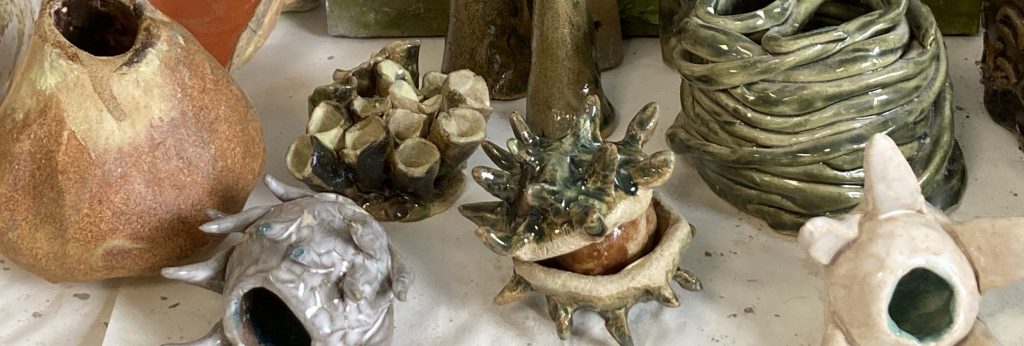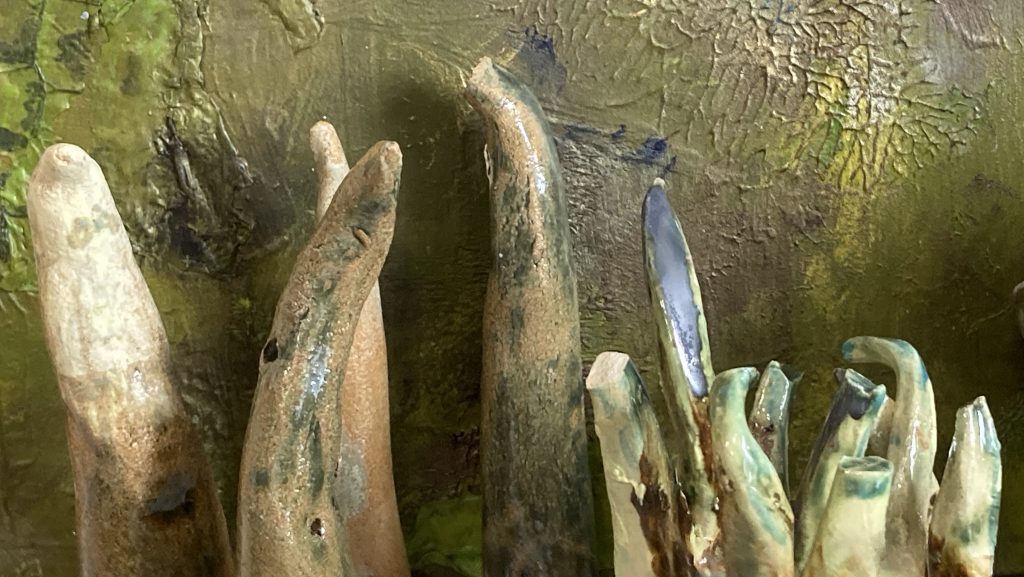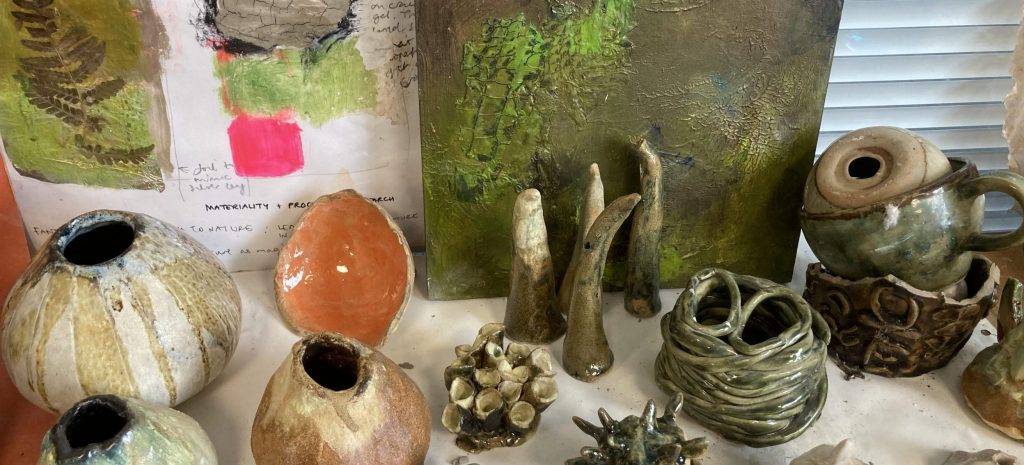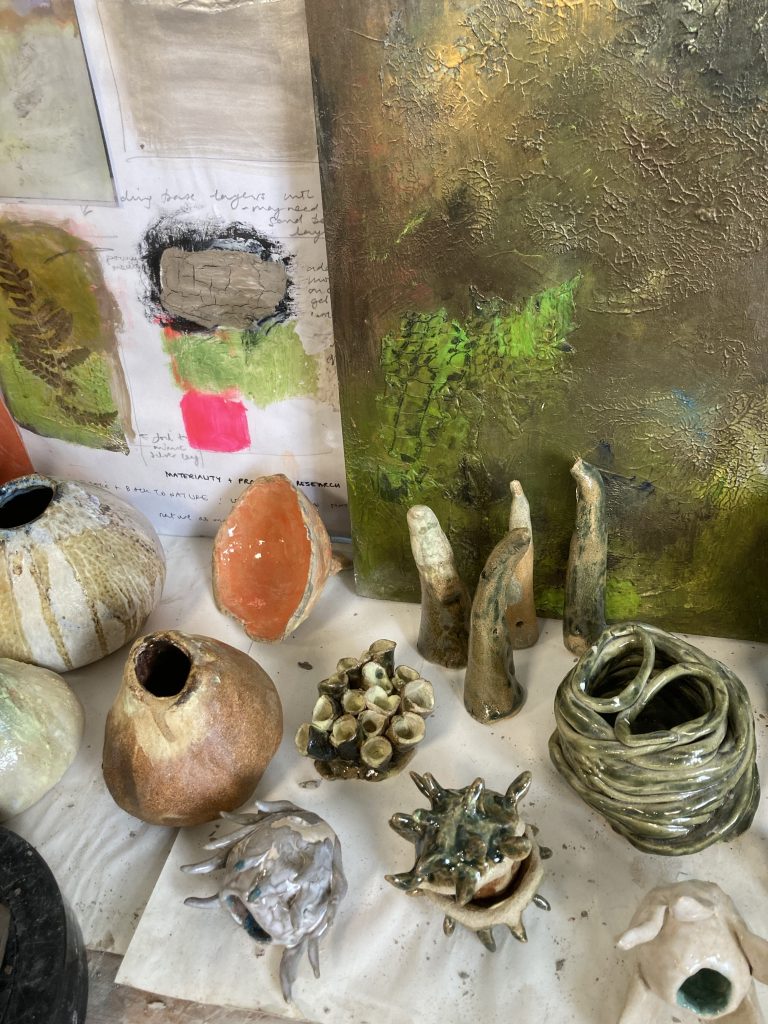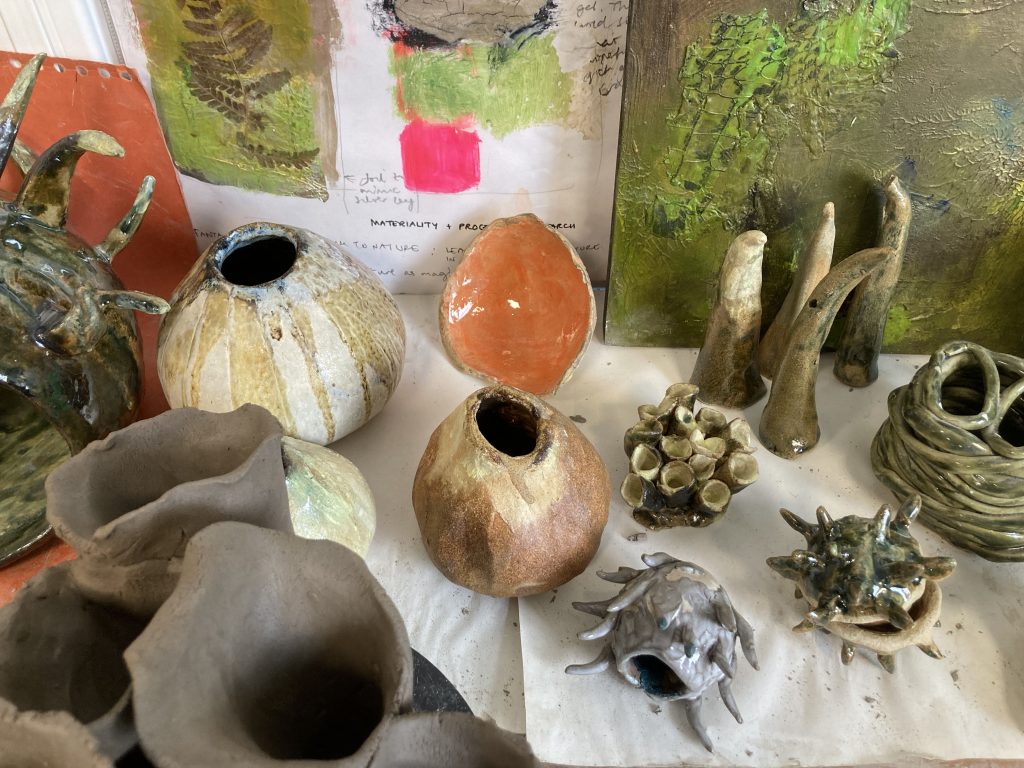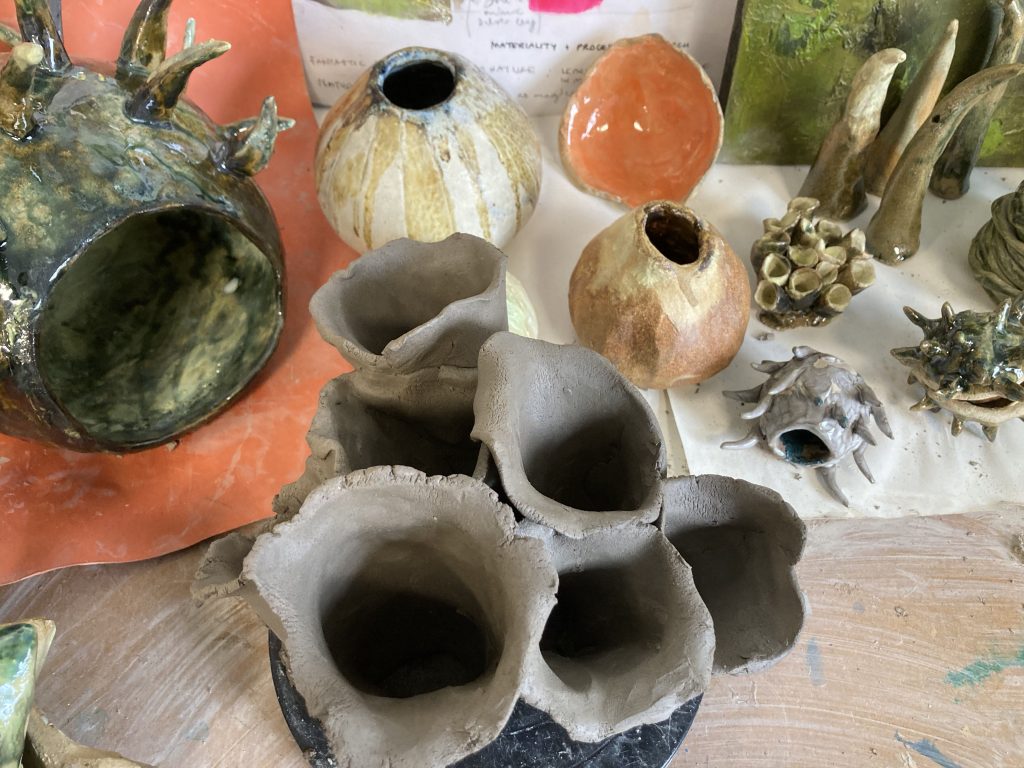Artist In Residence 2021
I’ve just completed an artist in residence at Broadstairs College in Kent. During the first 4 weeks of the residency I dabbled with the creation of mixed media sculptures to realise concepts that had been brewing for some time. I also grappled with he complexity of communicating some of my project ideas around within the setting. I successfully then parked my previous project ideas in the form of a draft booklet which freed me up to work on a simpler project which could be explained more easily within the setting.
Simultaneously, due to the planning and logistical constraints of bringing in all the materials to experiment away from my home studio I switched to the use of clay. This allowed me to simply go into Broadstairs College to create works. More importantly having worked on a mosaic piece in particular, I recognised that I could achieve organic sculptural forms easier and more effectively in clay. I then started to create ceramic miniatures/prototypes to ensure that pieces were sufficiently varied in terms of colour. form, surface pattern or glaze. Importantly each pieces needed to be designed to ensure that it could be altered in some way at a later stage. I had to accept that this was a 2 stage process and indeed: I knew from previous experience that once I have an object to work the alteration itself is much quicker and that I could incubate ideas for that alteration over a longer timeframe. I had to accept that I would be perceived as merely being concerned ceramic form.. I then started to work up a few of the more successful prototypes. All the while I was conscious that the pieces were infact intended to work alongside my painting which were located at home whilst the ceramic pieces were being created at a distance. I could only check how pieces worked alongside paintings when pieces were taken home to be fired and glazed. Quick placement of pieces at home allowed me to gauge how pieces worked but also how I still needed to scale up.
I’m now continuing to work on several larger pieces but know that I want to focus a little more on glazing (which could be improved). I’ve dug out a lot of glaze raw ingredients plus glaze recipe and chemistry books and ceramic artists. I just need to psyche myself up for a little experimentation!!
I really found the exploration of ceramic form worthwhile and can see this period of research feeding into ceramic sculpture workshops. I did really question how I could deal with people potentially wanting to purchase pieces in a show context which created a lot of personal tension which I could only resolve in knowing that the process of creating ceramic works better enables me to teach ceramic sculpture but also potentially to promote courses in the context of Go Create.
As an artist I really enjoyed the process of placing myself in a different setting to disrupt my usual working patterns. As an educational artist I appreciate how environment/constraint really affected/altered the creative pathway but also how my own process of working demonstrates how creativity and complexity needed time to resolve itself which is consistent with theory on greater degrees of creativity. As an artist I know that intuition plays a large part in the creative process. I felt the need to alter to pull myself out of the same old same old as someone who is self employed who has been working at home during lockdown following on from a period of raising two young children which commands routine and restriction particularly as a sole parent.
The process heightened my interest in exploring creativity but also in testing my own theory that psychologicy/role and toolkit (intelligence type, knowledge and the use of internal faculties to reach creative solutions) are all important factors which influence how creativity might resolve itself or support in defining practice. Fine Art Students are continually required to research and define their practice particularly at Masters Level within the context of art history alone and yet the possibility of research remains much wider. For artist educators wishing to locate themselves firmly within their practice this is particularly an issue. If we begin to recognise artist types or journeys through art we can perhaps expand our view art development or what it means to be a practitioner and how this might translate into research.

